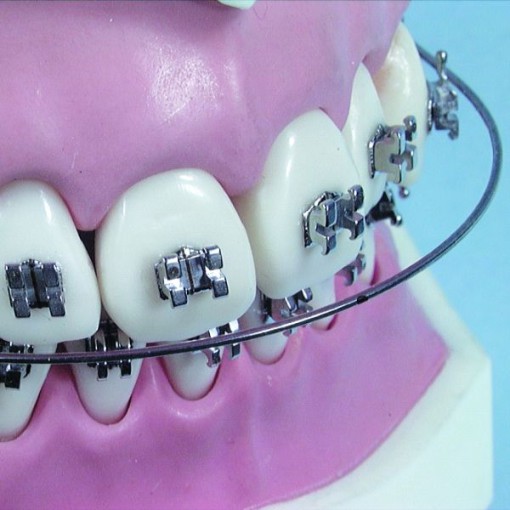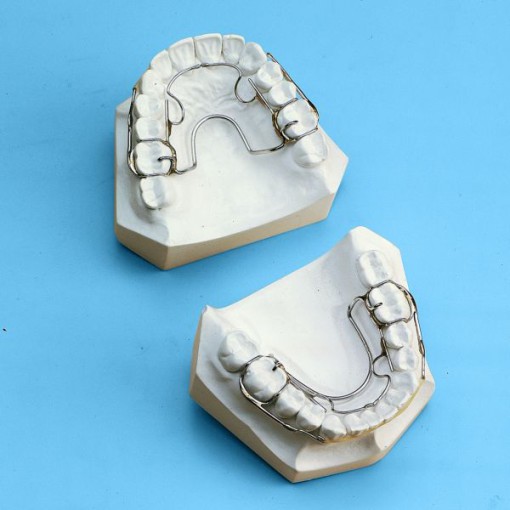 Metal wire and bars, when used for biomedical applications, must own specific mechanical and hypoallergenic characteristics. They have then developed suitable alloys that do not deteriorate in time and avoid rejection phenomena by the human body.
Metal wire and bars, when used for biomedical applications, must own specific mechanical and hypoallergenic characteristics. They have then developed suitable alloys that do not deteriorate in time and avoid rejection phenomena by the human body.
Metal materials that can be used in the biomedical sector for the production of needles, implants, wires and sutures must own some determinate characteristics of mechanical and fatigue strength, of resistance to corrosion induced by products and substances contained in the human body like salt solutions and the various acids (uric, lactic and phosphoric). They must also be stable in time, free from phenomena of migration by toxic metals like copper, arsenic, mercury and beryllium, besides not inducing rejection phenomena. Therefore, the metal materials intended for that use must satisfy the requisites demanded by specific regulations processed both by European bodies like for instance the Directive 93/42/CEE and the regulation ENE ISO 15841:2006, transposed by the Italian legislation respectively with the Legislative Decree n° 46/97 and the regulation UNI EN ISO 15841:2007. In the case of the wires used for the implantation of orthodontic appliances, the requisites concerning the physical and mechanical properties of materials are specified. For the stainless steel, for instance, are determined the temperature of transformation from the martensitic to the austenitic phase when the wire shows a non-linear elastic behaviour during the unloading phase at temperatures up to 50 °C, the modulus of elasticity, specific characteristic proof stress, the percentage elongation after fracture and the presence of hazardous elements. The metal biomaterials used include stainless steels, cobalt-based alloys, titanium and some of its alloys as well as nickel-titanium and titanium-molybdenum alloys. Metal materials are also included in the ISO standardization. Concerning the geometrical features, wires, diamond drawn to obtain a mirror surface finish to avoid possible corrosion phenomena, are available with cross, circular or rectangular section, usable individually or stranded.
Steels resistant to corrosion
Stainless steels, thanks to their resistance to corrosion, are of notable technological interest and then they find wide applications in the biomedical sector, thanks to both their easy machining and their low cost. Austenitic stainless steels essentially consist of iron alloys, in particular containing chromium and nickel, characterized by high resistance to corrosion assured by the presence of a minimum 15% chromium percentage that generates the formation of a subtle surface film of chromium oxide. The stainless steel finds application as wire, in single-filament or twisted configuration, for osteo-cartilaginous sutures, for temporary osteosynthesis devices (like humeral nails) and for the realization of orthodontic dental arches.
Titanium features a high resistance to corrosion since, being highly reactive, generates a surface layer composed by titanium dioxide that appears very compact, hard, adherent and very stable from the chemical point of view, granting in this way a very high resistance to corrosion. The latter characteristic, valid also in physiologic environment, coupled with bio-compatibility and mechanical specifications, has favoured a wide application of titanium and its alloys in biomedical ambit. Titanium alloys are classified as α alloys, α-β alloys and β alloys depending on the presence of stabilizing elements of the α phase (like Al, O and N) or stabilizers of the metastable β phase (such as Nb, Mo, Ta, Cr, Fe and V). Combining adequately the various elements, the biphasic α-β alloys originate. Titanium is generally used in the dental sector while its alloys find applications especially in orthopaedic surgery and in cardiovascular ambit. Titanium is then used in restorative dentistry and in implantology under the form of wires and arches for orthodontics. In orthopaedic surgery, they use titanium cables and screws to correct scoliosis by tensioning the cable to obtain the straightening of the deformed segment of the spine. For the implementation of dental implants, one of the most used alloys is that named Ti-6Al-4V, containing about 6% of aluminium and about 4% of vanadium. To avoid the presumed toxicity of vanadium, they have developed the alloys marked, respectively, Ti-5Al-2,5Fe containing about 5% of aluminium and about 2.5% of iron, and Ti-7Al-8Nb containing around 7% of aluminium and about 8% of niobium. For orthodontics applications, they use also wires in titanium and molybdenum alloy (nickel-free to avoid troubles of sensitivity or allergy to the metal) characterized by high elasticity and possibility of manual modelling.
Shape memory nickel-titanium alloys
Among SMA (shape memory alloys), great importance holds the binary intermetallic compound NiTi, containing about 55% of nickel, known as Nitinol (Nickel Titanium Naval Ordinance Laboratory) whose peculiarities are very evident in products like wires and bars. The shape memory is a characteristic of the material that, once deformed, takes again the initial geometrical configuration carrying out an appropriate heating over the transformation temperature at which the material settles in a different crystalline structure, taking the initial configuration and shape. NiTi alloys show a high compatibility with human tissues and therefore they find large use in applications that must grant a long resistance in time inside the human body. Besides, the strong intermetallic bond between nickel and titanium almost eliminates the risk of allergic, or highly sensitive, states to nickel. These alloys are then used in permanent orthodontic implants and, for instance, for the microscopic ‘Simon Nitinol Filter’ filters made with a very thin wire and characterized by a closed-umbrella configuration that, introduced into veins, exploit the shape memory effect induced by the body temperature and therefore open, thus blocking blood clots. Another device, for instance, used to reconnect tendons, ligaments and other tissues to bones, is constituted by a titanium or nickel-titanium structure provided with at least due arches of NiTi wire that are inserted into a tiny hole done in the bone.




